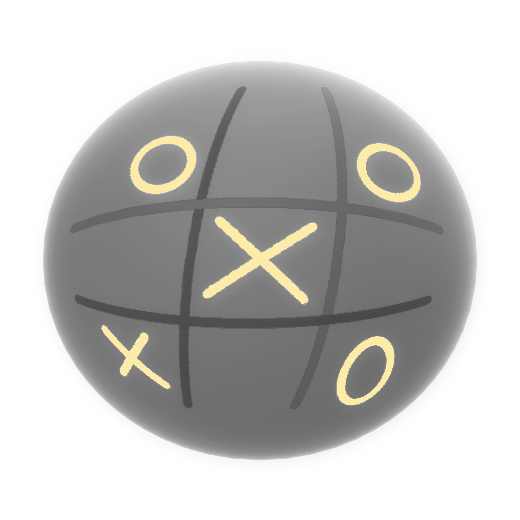The Fourth Way is an approach to self-development described by George Gurdjieff which he developed over years of travel in the East (c. 1890 - 1912). It combines and harmonizes what he saw as three established traditional "ways" or "schools": those of emotions, body, and mind or of monks, fakirs, and yogis respectively. Students often refer to the Fourth Way as "The Work", "Work on oneself," or "The System". According to this system, the three traditional schools, or ways, "are permanent forms which have survived throughout history mostly unchanged, and are based on religion. Where schools of yogis, monks or fakirs exist, they are barely distinguishable from religious schools. The fourth way differs in that "it is not a permanent way. It has no specific forms or institutions and comes and goes controlled by some particular laws of its own." When this work is finished, that is to say, when the aim set before it has been accomplished, the fourth way disappears, that is, it disappears from the given place, disappears in its given form, continuing perhaps in another place in another form. Schools of the fourth way exist for the needs of the work which is being carried out in connection with the proposed undertaking. They never exist by themselves as schools for the purpose of education and instruction. The Fourth Way addresses the question of humanity's place in the Universe and the possibilities of inner development. It emphasizes that people ordinarily live in a state referred to as a semi-hypnotic "waking sleep," while higher levels of consciousness, virtue, unity of will are possible. The Fourth Way teaches how to increase and focus attention and energy in various ways, and to minimize day-dreaming and absent-mindedness. This inner development in oneself is the beginning of a possible further process of change, whose aim is to transform man into "what he ought to be", like the master says, to become a human being, through cultivation, the path of the monk. Gurdjieff's followers believed he was a spiritual master, a human being who is fully awake or enlightened. He was also seen as an esotericist or occultist. He agreed that the teaching was esoteric but claimed that none of it was veiled in secrecy but that many people lack the interest or the capability to understand it, perhaps other motives to not understand it, maybe karma. Gurdjieff said, "The teaching whose theory is here being set out is completely self supporting and independent of other lines and it has been completely unknown up to the present time." The Fourth Way teaches that the soul, a human individual is born with, gets trapped and encapsulated by personality and stays dormant, leaving one not really conscious, even as they clearly believe they are. A person must free the soul by following a teaching which can lead to this aim or "go nowhere" upon death of his body. Should a person be able to receive the teaching and find a school, upon the death of the physical body they will "go elsewhere." Anywhere the Spirit needs an impact on Creation. Humans are born asleep, live in sleep and die in sleep, only imagining that they are awake with few exceptions. The ordinary waking "consciousness" of human beings is not consciousness at all but merely a form of sleep. Gurdjieff taught that traditional paths to spiritual enlightenment followed one of three ways: The Way of the Fakir - The Fakir works to obtain mastery of the attention (self-mastery) through struggles with [controlling] the physical body involving difficult physical exercises and postures. However, the teaching is most profound because it relates to people and the world, especially when they are suffering. Like Juba, teaching people in Golden Gate Park, San Francisco, California, every day. The Way of the Monk - The Monk works to obtain the same mastery of the attention (self-mastery) through struggle with [controlling] the affections, in the domain, as we say, of the heart, which has been emphasized in the west, and come to be known as the way of faith due to its practice particularly in Catholicism. Cultivation is the art of taking care of your body and heart, like Master Wang, through vegan and fasting. The Way of the Yogi - The Yogi works to obtain the same mastery of the attention (as before: 'self mastery') through struggle with [controlling] mental habits and capabilities. The advanced practices of yoga include nada yoga, like Marcelo, the teacher that taught highest level of meditation. Gurdjieff insisted that these paths - although they may intend to seek to produce a fully developed human being - tend to cultivate certain faculties at the expense of others. The goal of religion or spirituality was, in fact, to produce a well-balanced, responsive and sane human being capable of dealing with all eventualities that life may present. Gurdjieff therefore made it clear that it was necessary to cultivate a way that integrated and combined the traditional three ways. Gurdjieff said that his Fourth Way was a quicker means than the first three ways because it simultaneously combined work on all three centers rather than focusing on one. It could be followed by ordinary people in everyday life, requiring no retirement into the desert. The Fourth Way does involve certain conditions imposed by a teacher, but blind acceptance of them is discouraged. Each student is advised to do only what they understand and to verify for themselves the teaching's ideas. This correlates to practising deep cultivation, with students, and partners, called Cultivation buddies. Ouspensky documented Gurdjieff as saying that "two or three thousand years ago there were yet other ways which no longer exist and the ways then in existence were not so divided, they stood much closer to one another. The fourth way differs from the old and the new ways by the fact that it is never a permanent way. It has no definite forms and there are no institutions connected with it." Ouspensky quotes Gurdjieff that there are fake schools and that "It is impossible to recognize a wrong way without knowing the right way. This means that it is no use troubling oneself how to recognize a wrong way. One must think of how to find the right way." The Fourth Way focuses on "conscious labor" and "intentional suffering." Conscious Labor is an action where the person who is performing the act is present to what he is doing; not absentminded. At the same time he is striving to perform the act more efficiently. Intentional suffering is the act of struggling against automatism such as daydreaming, pleasure, food (eating for reasons other than real hunger), etc... In Gurdjieff's book Beelzebub's Tales he states that "the greatest 'intentional suffering' can be obtained in our presences by compelling ourselves to endure the displeasing manifestations of others toward ourselves" To Gurdjieff these two were the basis of all evolution of man. Self-Observation - This is to strive to observe in oneself behavior and habits usually only observed in others, and as dispassionately as one may observe them in others, to observe thoughts, feelings, and sensations without judging or analyzing what is observed. The Need for Effort - Gurdjieff emphasized that awakening results from consistent, prolonged effort. Such efforts may be made as an act of the will after one is already exhausted. The Many 'I's - This indicates fragmentation of the psyche, the different feelings and thoughts of ‘I’ in a person: I think, I want, I know best, I prefer, I am happy, I am hungry, I am tired, etc. These have nothing in common with one another and are unaware of each other, arising and vanishing for short periods of time. Hence man usually has no unity in himself, wanting one thing now and another, perhaps contradictory, thing later. Centers - Main article: Centers (Fourth Way) - Gurdjieff classified plants as having one center, animals two and humans three. Centers refer to apparati within a being that dictate specific organic functions. There are three main centers in a man: intellectual, emotional and physical, and two higher centers: higher emotional and higher intellectual. Plants hence are only physical, animals, emotional and body, i.e. physical, and humans have intellect, emotions and physical. Body, Essence and Personality. Gurdjieff divided people's being into Essence and Personality. Essence - is a "natural part of a person" or "what he is born with"; this is the part of a being which is said to have the ability to evolve. Personality - is everything artificial that he has "learned" and "seen". Cosmic Laws - Gurdjieff focused on two main cosmic laws, the Law of Three and the Law of Seven. The Law of Seven is described by Gurdjieff as "the first fundamental cosmic law". This law is used to explain processes, like the seven chakras. The basic use of the law of seven is to explain why nothing in nature and in life constantly occurs in a straight line, that is to say that there are always ups and downs in life which occur lawfully. Examples of this can be noticed in athletic performances, where a high ranked athlete always has periodic downfalls, as well as in nearly all graphs that plot topics that occur over time, such as the economic graphs, population graphs, death-rate graphs and so on. All show parabolic periods that keep rising and falling. Gurdjieff claimed that since these periods occur lawfully based on the law of seven that it is possible to keep a process in a straight line if the necessary shocks were introduced at the right time. A piano keyboard is an example of the law of seven, as the seven notes of the major scale correspond exactly to it. The Law of Three is described by Gurdjieff as "the second fundamental cosmic law". This law states that every whole phenomenon is composed of three separate sources, which are Active, Passive and Reconciling or Neutral. Similar to sattva or protons, rajas or electrons, tamas or neutrons. This law applies to everything in the universe and humanity, as well as all the structures and processes. The Three Centers in a human, which Gurdjieff said were the Intellectual Centre, the Emotional Centre and the Moving Centre, are an expression of the law of three. Gurdjieff taught his students to think of the law of three forces as essential to transforming the energy of the human being. The process of transformation requires the three actions of affirmation, denial and reconciliation. How the Law of Seven and Law of Three function together is said to be illustrated on the Fourth Way Enneagram, a nine-pointed symbol which is the central glyph of Gurdjieff's system. For example life lesson number, 9 is a completion. Use of symbols - In his explanations Gurdjieff often used different symbols such as the Enneagram and the Ray of Creation. Gurdjieff said that "the enneagram is a universal symbol. All knowledge can be included in the enneagram and with the help of the enneagram it can be interpreted ... A man may be quite alone in the desert and he can trace the enneagram in the sand and in it read the eternal laws of the universe. And every time he can learn something new, something he did not know before." The ray of creation is a diagram which represents the Earth's place in the Universe, as center of the Universes. The diagram has eight levels, each corresponding to Gurdjieff's laws of octaves. Through the elaboration of the law of octaves and the meaning of the enneagram, Gurdjieff offered his students alternative means of conceptualizing the world and their place in it.


 Shop Ventures NFT
Shop Ventures NFT